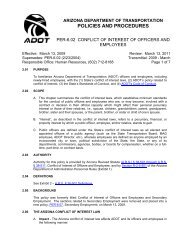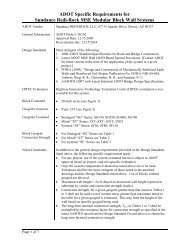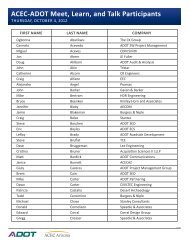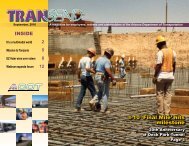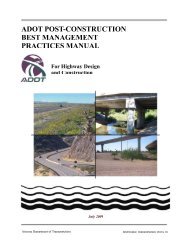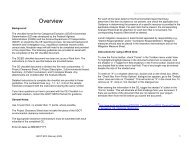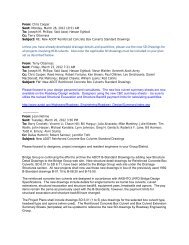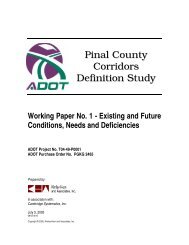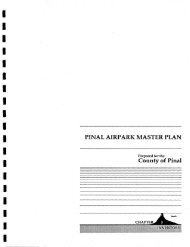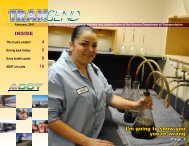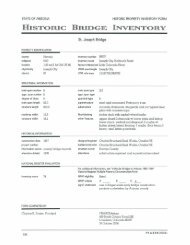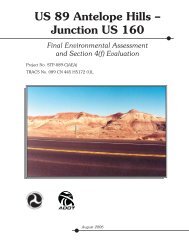I-10 Twin Peaks Traffic Interchange, Environmental Assessment
I-10 Twin Peaks Traffic Interchange, Environmental Assessment
I-10 Twin Peaks Traffic Interchange, Environmental Assessment
You also want an ePaper? Increase the reach of your titles
YUMPU automatically turns print PDFs into web optimized ePapers that Google loves.
Affected Environment and <strong>Environmental</strong> Impacts October 2005<br />
to the east and west of the Santa Cruz River. Slopes angle toward the Santa Cruz<br />
River. Slopes increase in the eastern portion of the study area near the foothills of<br />
the Santa Catalina Mountains and Tortolita Mountains. The Santa Cruz River and<br />
floodplain is the dominant topographic feature in the project area. With the<br />
exception of the Santa Cruz River, there are no unique or important topographic<br />
features in the study area.<br />
Impacts<br />
No Build Alternative<br />
The no build alternative would have no impact on topography in the project area.<br />
Preferred Alternative<br />
Although the preferred alternative would construct an elevated roadway and<br />
bridges over the Santa Cruz River, I-<strong>10</strong>, and the UPRR, existing slopes and other<br />
topographic features in the project area, would not be affected. The low flow<br />
channel of the Santa Cruz River would be widened to compensate for the roadway<br />
and bridge embankment fill placed within the high flow Santa Cruz River channel<br />
(see Floodplain Section, page 4-14); however, these impacts would not affect the<br />
Santa Cruz River flows or functions.<br />
Mitigation<br />
As described in the previous paragraph, no mitigation measures for topography are<br />
necessary, if the preferred alternative were constructed.<br />
Soils<br />
Existing Conditions<br />
Soil types were identified for the study area through a review of comprehensive<br />
maps compiled by the United States Department of Agriculture, Natural Resources<br />
Conservation Service (NRCS) compiled in 2003, and the Arizona Agricultural<br />
Experiment Station in 1969. As would be expected in a fluvial depositional<br />
system, soils vary widely throughout the study area, often changing over distances<br />
of tens of feet. Soils are predominantly of the Anthony, Agua and Grabe Series.<br />
Anthony series consists of well-drained sandy loams to gravelly sandy loams.<br />
These soils are formed in mixed material that was deposited on flood plains and<br />
alluvial fans by rivers and streams. Slopes are 0 to 5 percent. Permeability of these<br />
soils is moderately rapid and the hazard of erosion is moderate. These soils are<br />
found throughout the study area.<br />
Agua Series soils consist of well-drained fine sandy loams about 2 feet thick over<br />
fine sand. These soils formed in mixed material that was deposited on flood plains<br />
by rivers and streams. Deposits of the Aqua series are found on the flood plain of<br />
the Santa Cruz River. Slopes are generally level and runoff is slow. Hence, the<br />
hazard of erosion is slight to moderate.<br />
Interstate <strong>10</strong> <strong>Traffic</strong> <strong>Interchange</strong> at<br />
<strong>Twin</strong> <strong>Peaks</strong>/Linda Vista<br />
4-5<br />
Project No.: NH-0<strong>10</strong>-D (AIW)<br />
TRACS No.: <strong>10</strong> PM 236 H5838 01D



